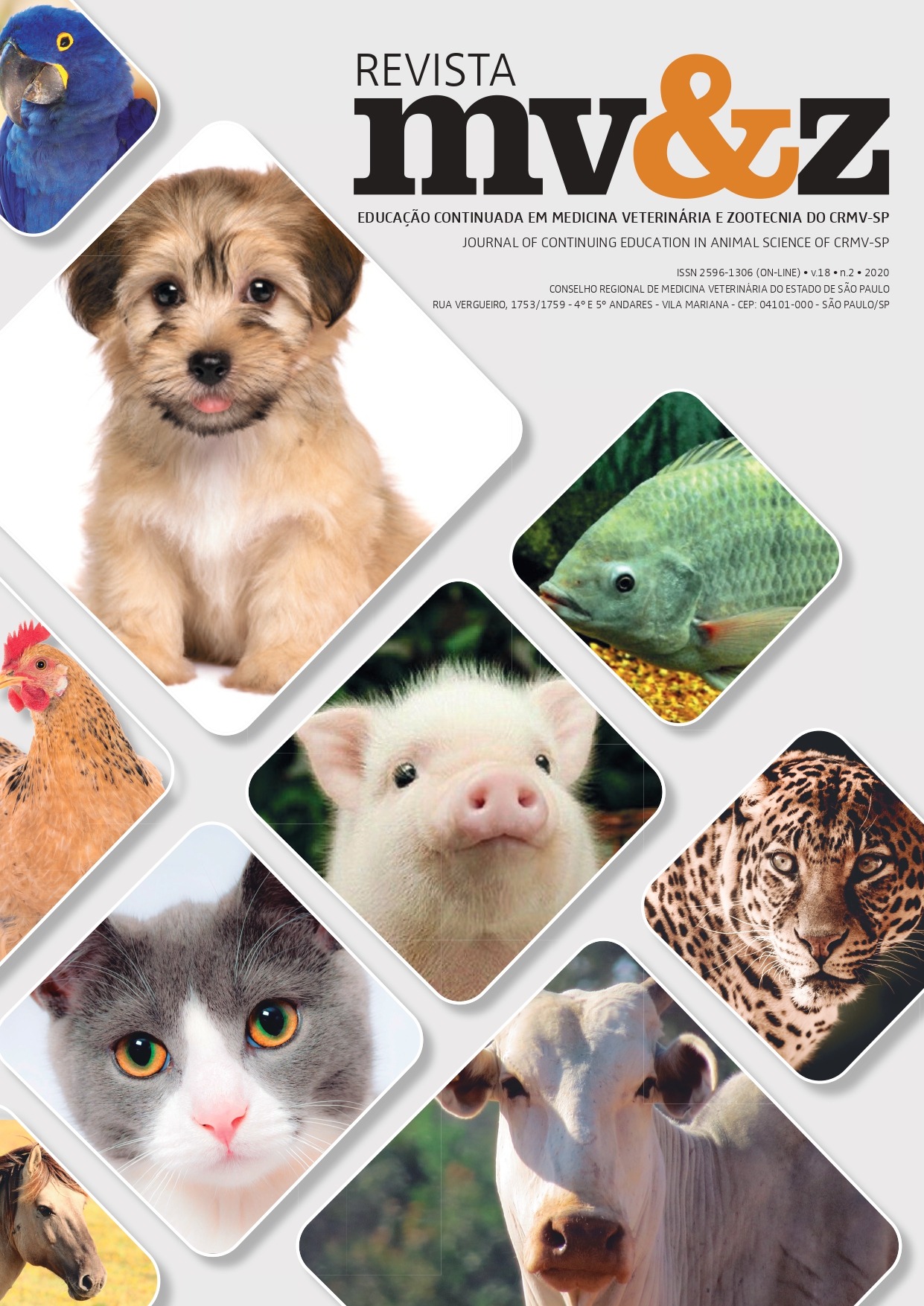Canine multicentric lymphoma: a synopsis of clinicopathological aspects and laboratory changes
Main Article Content
Abstract
Lymphoma is a tumor characterized by the proliferation of malignant lymphoid cells, which can occur in any organ, initially affecting lymph nodes, spleen and liver. It’s cause is not elucidate, but it might be a multifactorial etiology, including genetic factors, immune deficiency and chemical carcinogens. There are four anatomical classifications for lymphoma: multicentric, alimentary, mediastinal and extranodal, but, 80% of the cases in dogs are classified as multicentric lymphomas. The diagnosis is based on cytological, histological and molecular biology sample analyzes, that assist in settlement the animal’s prognosis considering the degree of malignancy of the lymphoma and the cell of origin. Laboratory tests such as hematological and biochemical profiles provide data for monitoring the animal, disease involvement and staging. Lymphoma is a condition of great relevance within the conditions that affect dogs, making it necessary to educate veterinarians to combine the academic basis with the clinical presentation of lymphoma, with the knowledge of the main changes described to create an early diagnosis, establishing a conjunction of success with the clinical and allowing the patient a better quality of life and survival in the face of the disease.
Article Details
1. Autores mantém os direitos autorais e concedem à revista o direito de primeira publicação, com o trabalho licenciado sob a Creative Commons Atribuição-NãoComercial-SemDerivações 4.0 Internacional
2. Autores têm autorização para assumir contratos adicionais separadamente, para distribuição não-exclusica da versão do trabalho publicada nesta revista (ex.: publicar em repositório institucional ou como capítulo de livro), com reconhecimento de autoria e publicação inicial nesta revista.
3. Autores têm permissão e são estimulados a publicar e distribuir seu trabalho online (ex.: em repositórios instituicionais ou na sua página pessoal) a qualquer ponto antes ou durante o processo editorial, já que isso pode gerar alterações produtivas, bem como aumentar o impacto e a citação do trabalho publicado (Veja O Efeito do Acesso Livre);
